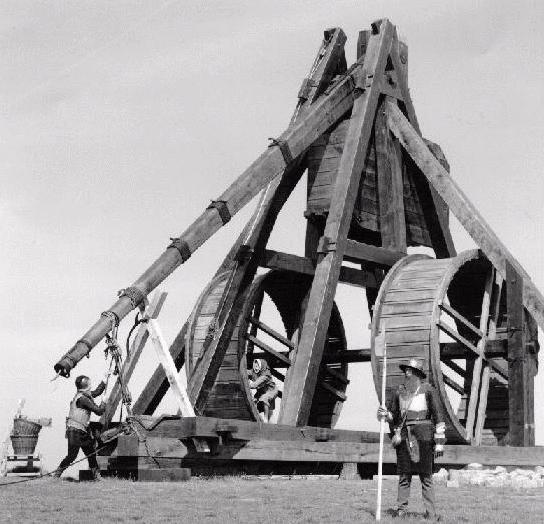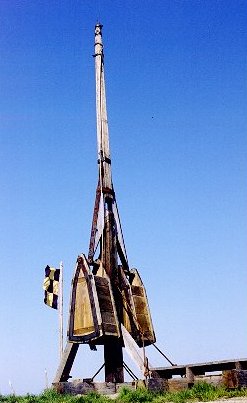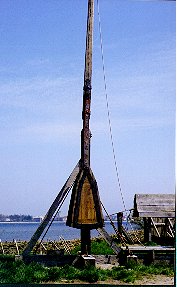|
|

|
|
|
|

|
|
|
|
|
The 21 tonne Monster Shown below is the Medieval Centre's beautiful big machine. It has a ballast of 15 tonnes and is designed to throw projectiles weighing up to 300 kilos, although in routine use the same 15-20kg stones that the smaller machine throws are used. When loaded the machine weighs around 21 tonnes. The trebuchet is built of oak and medieval craft techniques were used throughout its construction. |

|
Note the beam's construction of two halves spliced together
longitudinally and bound in place with rope whipping. At the end of the
beam and you can see the prong that holds the sling cord's loop.
The "V"-section launch trough (whose rear end can be seen at the back
of the trebuchet) is the runway that the sling holding the projectile
slides along during launch. This can also be seen in the base construction
photograph in the previous "Construction Techniques" section.
Finally, look at the treadmill-powered winches. The use of such
treadmills is shown on some historical illustrations (and it doesn't
hurt that they look superb). During the summer season this machine is used almost every day, although with a reduced counterweight mass and shooting projectiles weighing about 15kg. With four people working the winches it can be loaded in about a half an hour, including strict safety procedures. |

|
The Big Trebuchet Slings a Shot (1) Here a shot is frozen with the projectile in the long sling clear of the trough and beginning its swing around the end of the beam. In the background the torsion-powered mangonel and a single-upright traction trebuchet can be seen. |

|
|
|
|

|
|
|
|

|
|
|
|

|
|
| Last Edited: January 2002 |
|
© Russell Miners . |
